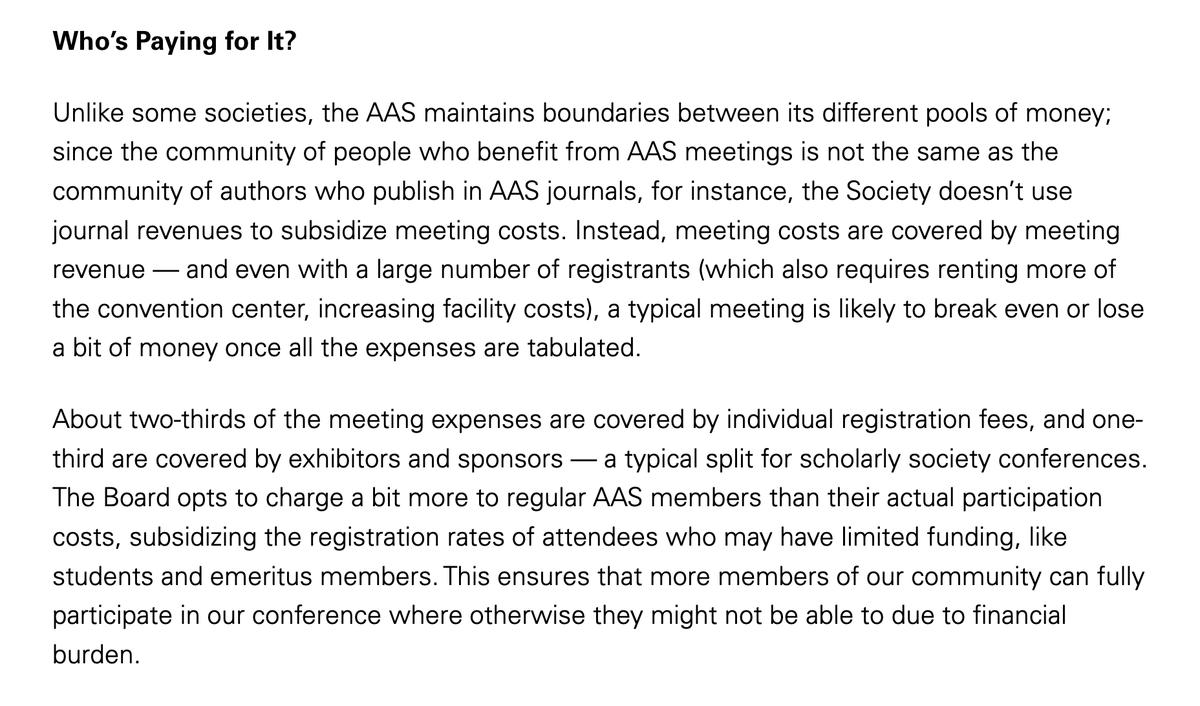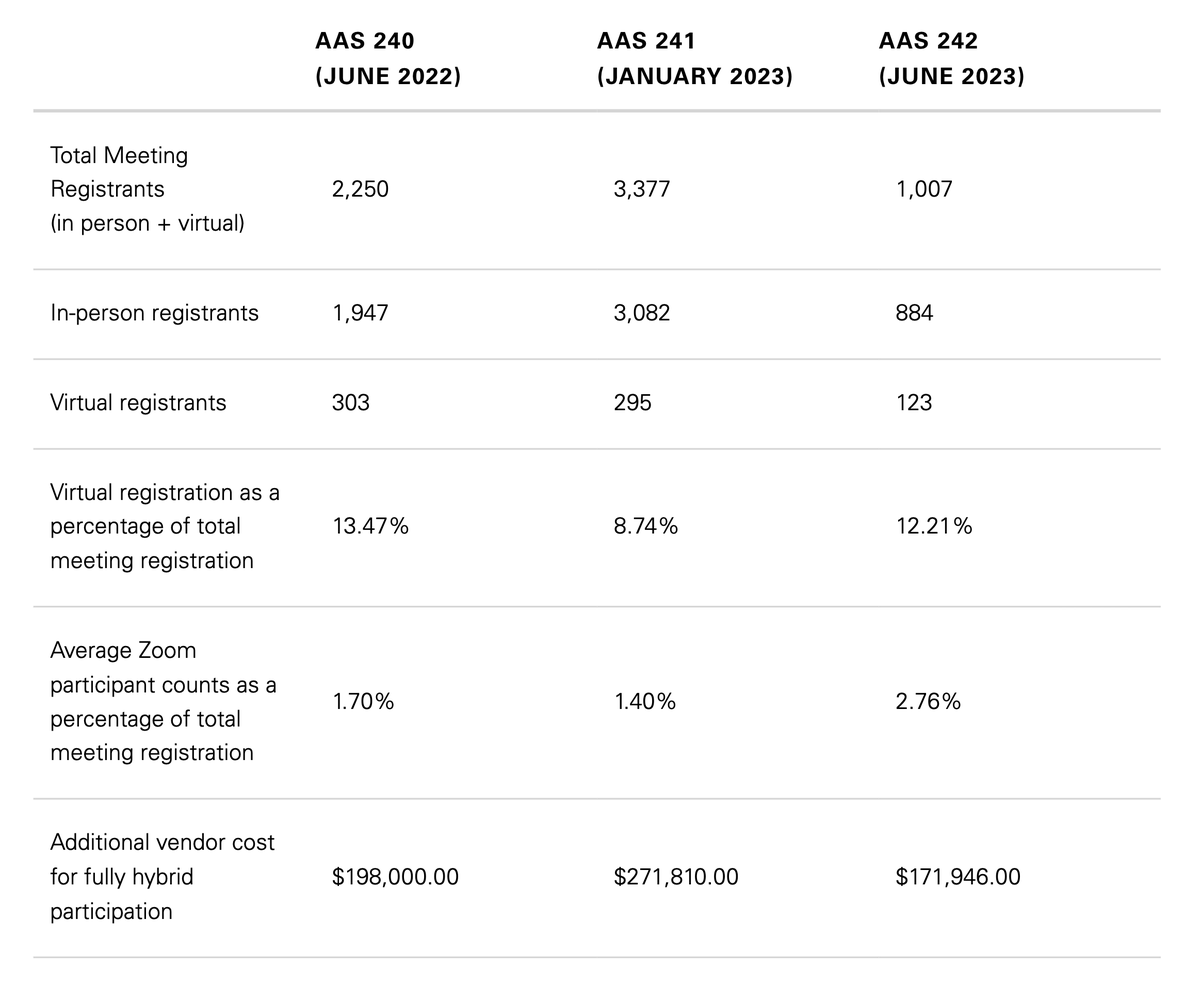Your AAS registration fee is very high. It's a huge barrier to participation. We're (quite literally) not allowed to bankrupt the society, but we can start a dialog about fees.
Hosting #AAS241 will cost us at least $1,612,249. We'll lose money or *barely* break even (1/n)
Hosting #AAS241 will cost us at least $1,612,249. We'll lose money or *barely* break even (1/n)
https://twitter.com/AAS_Office/status/1592220547584516097

The largest expense by far is our collection of (excellent! professional!) A/V vendors, to whom we'll pay $424,000. Making the meeting hybrid effectively doubles their quote, i.e. adds about $200,000 to the total meeting cost. There is almost zero price competition in this space. 

There is basically no compelling argument why a conference that costs you $700 in reg fee alone shouldn't provide you stable, fast wifi throughout the meeting. And so we will pay $147,000 to provide "free" WiFi throughout all venues. We have zero negotiating power here.
If you pay $700 in registration fee, it'd feel crappy if your society didn't put out some coffee and pastries for you in the morning. We'll pay $200,000 in food & beverage at this meeting. Individual pastries can range as high as $8 a piece. A single pot of coffee is >$200.
Those cash bars at "happy hour" in the exhibit hall? Where you'll be charged like $12 for a Sam Adams? Those alone cost several thousand bucks each. 👀
Why are we paying $40,000 in credit card fees? Because nearly everyone pays their registration fee on a credit card (perfectly understandable). The AAS was able to negotiate with processors to get a lower rate due to our volume and timing of transactions, but it's still $40K.
Meeting Staff Salary & Benefits is the cost of the fully loaded FTEs for our phenomenal meetings team, without whom the meeting would be a dumpster fire of chaos and pain.
The financial burden of child & dependent care can be so great that it prevents attendance at meetings, especially for early career scientists or those at small institutions with limited funding. We therefore heavily subsidize childcare: aas.org/content/childd…
The total cost and cost-per-attendee curve (as a function of meeting size) is bonkers, with step functions all over the place. AAS meetings (until the early 2000s) used to be hosted at Universities or large-ish hotels. Now we're just large enough to require a convention center. 

there *are* places we totally could save. Maybe we don't need those cash bars. Maybe ditch the coffee and pastries. But even cutting food costs by half would only lower per-attendee cost a small amount, because the cost is so dominated by meeting A/V and support.
Anyway, while we do charge a virtual attendance fee, we insist that virtual attendees not be charged for coffee & pastries and all the in-person stuff they will not be able to enjoy. So we silo their fees to pay for only the virtual platform.
#AAS241 is going to be amazing. Our Plenary & Prize Lecture roster alone will be incredible. Early registration ends *today*. Please lock in that lower fee. And please enjoy those $8 bagels. 🥴😜 aas.org/meetings/aas24… 

We welcome your feedback & thoughts on registration fees to comments@aas.org. We may not be able to respond to everything in that inbox, but we do read everything and take it super seriously.
• • •
Missing some Tweet in this thread? You can try to
force a refresh



















